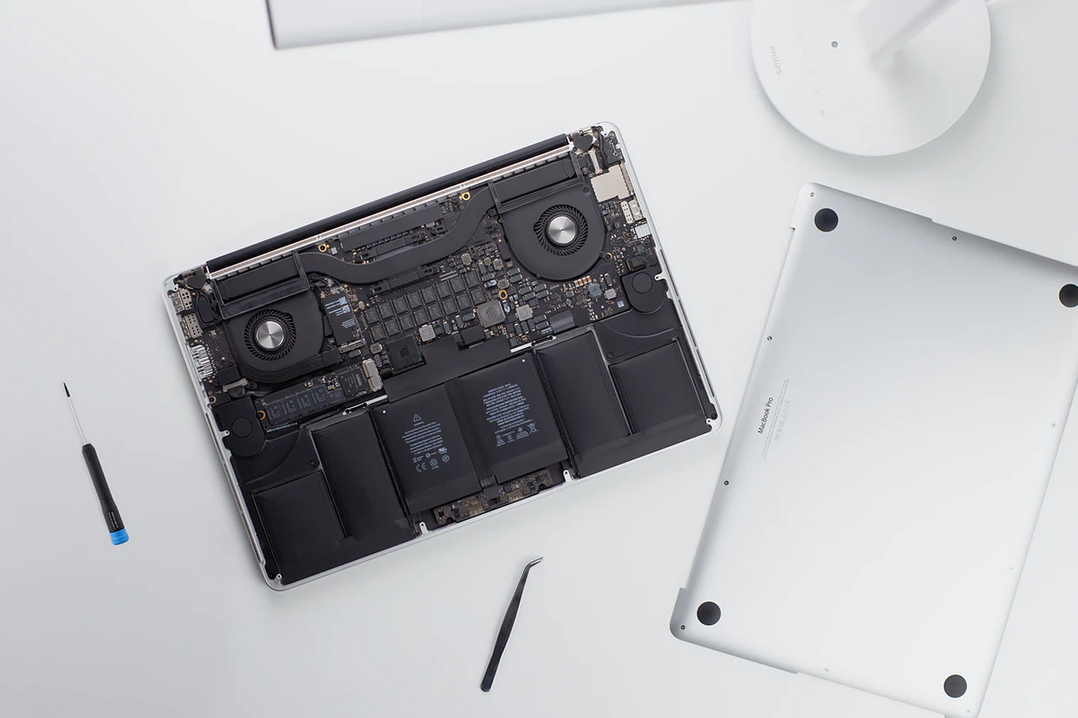How To Upgrade Your Laptop
Quote from Steve on September 22, 2021, 7:45 am
Notebooks, of course, aren't nearly as flexible as your typical desktop PC when it comes to hardware swaps. But upgrading your laptop, within the confines of what it will allow, can be a great way to get more life out of it. Depending on the model, you might be able to add more system memory (RAM) to make it more responsive, upgrade the storage drive for a capacity and performance boost, or replace the battery to rejuvenate the charge-holding that the machine had when it was new.
What you can actually do yourself varies from laptop model to laptop model, however. This guide helps you identify which laptop components you can (and can't) upgrade, and how to replace them. We'll even discuss items like the Wi-Fi radio and the graphics processor (GPU), and how to handle any warranty issues that might come up if you perform upgrades.
So, What Exactly Can I Upgrade?
This is a general guide for laptops produced from the early 2010s onward—that is, in the last decade. It won't cover every configuration, but it should get pretty close. You will definitely run across exceptions, though.
Early Microsoft Surface Laptop models and their fabric-coated keyboard decks, for example, are largely glued together and near-impossible to open without damage. Or, a different limitation: Some Apple MacBooks use soldered-down instead of removable components.
That said, on average, the following components are usually upgradable in a typical business or consumer laptop:
- The main system memory (RAM).
- The primary storage, which may come in the form of an M.2 or mSATA solid-state drive or a 2.5-inch SSD or hard drive.
- The secondary storage, if present (typically a 2.5-inch hard drive, and only on larger models).
- The battery pack.
- The wireless/Bluetooth card.
 Notebooks, of course, aren't nearly as flexible as your typical desktop PC when it comes to hardware swaps. But upgrading your laptop, within the confines of what it will allow, can be a great way to get more life out of it. Depending on the model, you might be able to add more system memory (RAM) to make it more responsive, upgrade the storage drive for a capacity and performance boost, or replace the battery to rejuvenate the charge-holding that the machine had when it was new.
Notebooks, of course, aren't nearly as flexible as your typical desktop PC when it comes to hardware swaps. But upgrading your laptop, within the confines of what it will allow, can be a great way to get more life out of it. Depending on the model, you might be able to add more system memory (RAM) to make it more responsive, upgrade the storage drive for a capacity and performance boost, or replace the battery to rejuvenate the charge-holding that the machine had when it was new.
What you can actually do yourself varies from laptop model to laptop model, however. This guide helps you identify which laptop components you can (and can't) upgrade, and how to replace them. We'll even discuss items like the Wi-Fi radio and the graphics processor (GPU), and how to handle any warranty issues that might come up if you perform upgrades.
So, What Exactly Can I Upgrade?
This is a general guide for laptops produced from the early 2010s onward—that is, in the last decade. It won't cover every configuration, but it should get pretty close. You will definitely run across exceptions, though.
Early Microsoft Surface Laptop models and their fabric-coated keyboard decks, for example, are largely glued together and near-impossible to open without damage. Or, a different limitation: Some Apple MacBooks use soldered-down instead of removable components.
That said, on average, the following components are usually upgradable in a typical business or consumer laptop:
- The main system memory (RAM).
- The primary storage, which may come in the form of an M.2 or mSATA solid-state drive or a 2.5-inch SSD or hard drive.
- The secondary storage, if present (typically a 2.5-inch hard drive, and only on larger models).
- The battery pack.
- The wireless/Bluetooth card.
